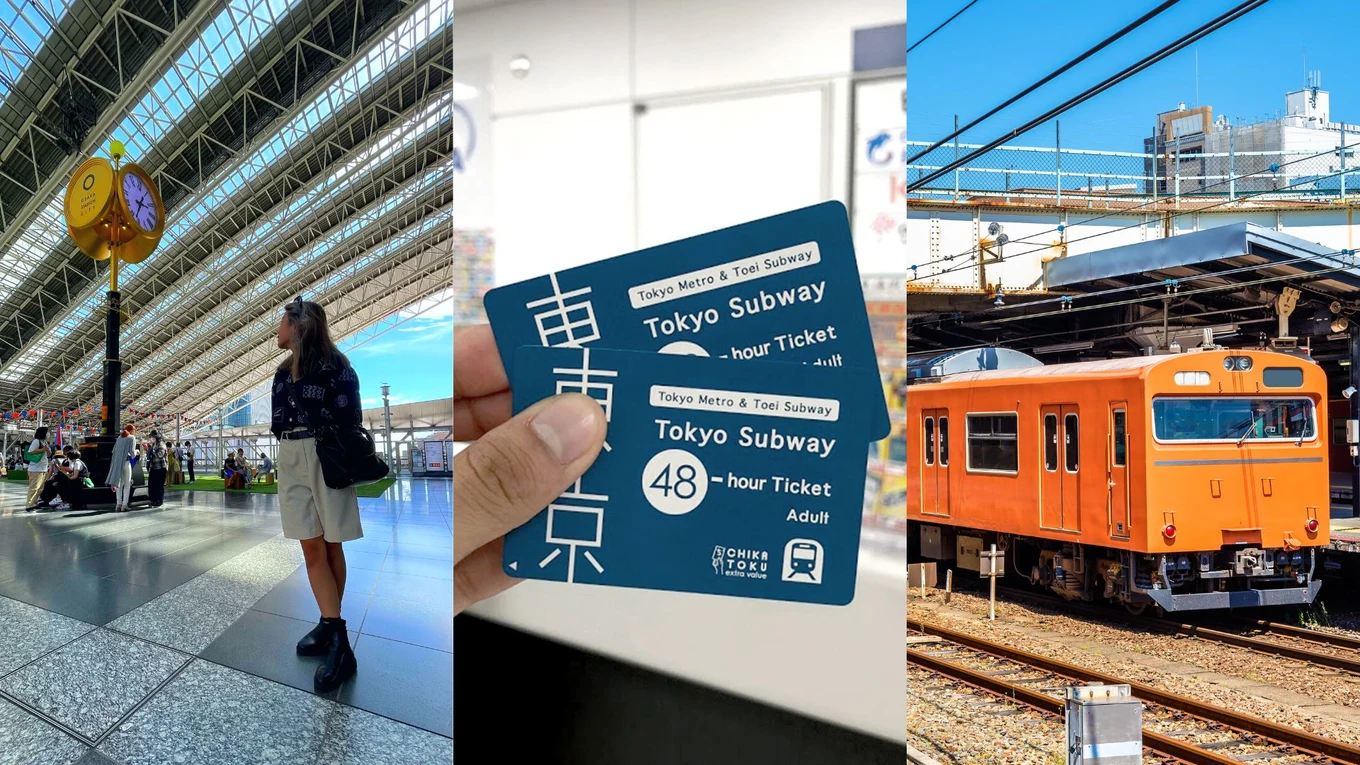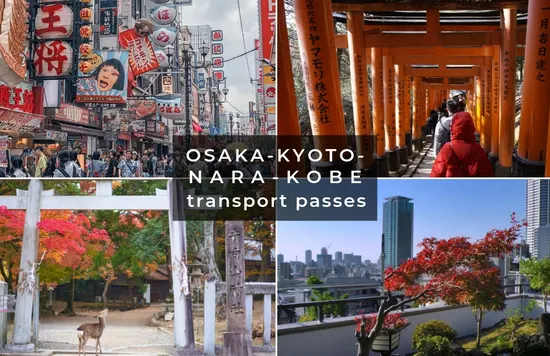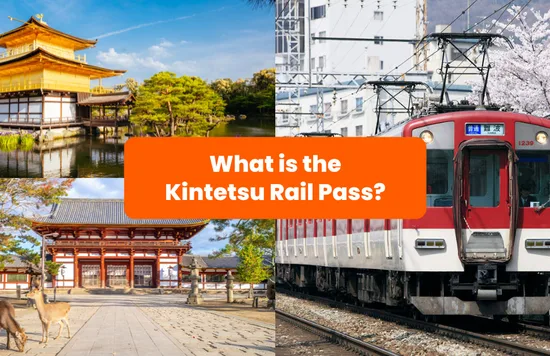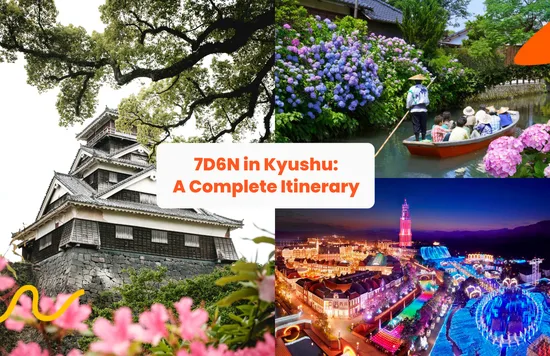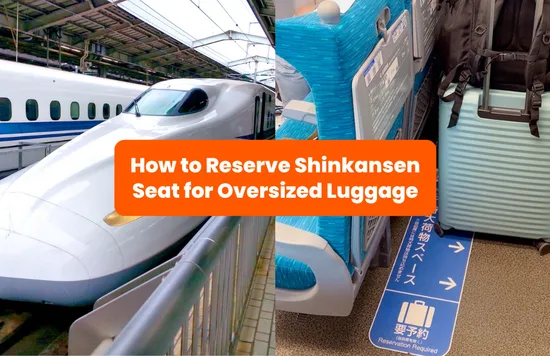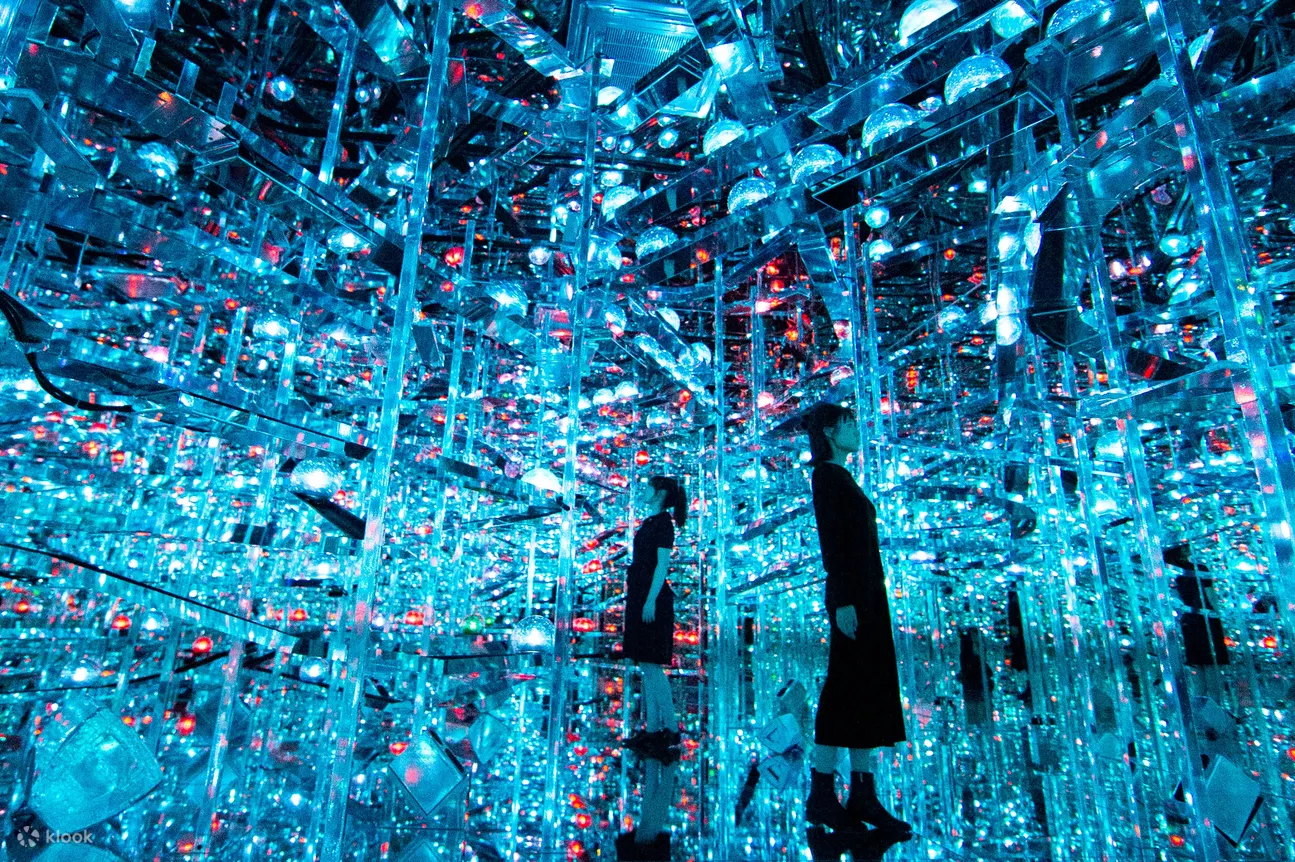Trains in Japan and how to travel on Japan’s rail network
How to ride trains in Japan
Types of trains in Japan
Type of train: | What is it? |
Shinkansen (新幹線) | - Also known as bullet trains, these are the fastest transportation modes in Japan with very few stops (if any) in comparison to the rapid or local trains - Included in the Whole Japan JR Pass except Nozomi and Mizuho lines |
Limited Express (特急) | - There are over100 different types of Limited Express trains, with a limited number of stops, so they only go to major Japanese stations - Included in the JR Pass |
Express (急行) | - Also stops at limited stations - Covers main airport transfers like Haneda International Airport (Tokyo Monorail), Narita International Airport (Narita Express), and Kansai International Airport (Haruka Express) - Included in the JR Pass |
Rapid (快速) | - Also stops at limited stations - No special fares needed, you can board them with a regular train ticket - Included in JR Pass |
Local (普通列車) | - Local trains can either go from point A to point B or run at loop lines in both directions (like the Yamanote line in Tokyo or the Osaka loop line) - Stops at all stations hence not recommended for long distance travelling as it can be very slow - Included in JR Pass |
Special | - Also known as joyful trains, these special themed trains are usually character trains or trains that have unique features or designs - Eg. Pikachu Train (POKÉMON with YOU Train), FruiTea Fukushima (café train with desserts and beverages made from seasonal fruits from Fukushima). More info here. |
Japan Train Ticket Types
Train Ticket Type | Description |
- Allows unlimited travel on all Japan Railways Group (JR) trains, buses, and ferry services - Choose from Whole Japan Pass or other Regional Passes - Duration varies depending on what pass you get | |
Standard Train TIcket | - Normal train ticket that will take you from Point A to Point B - Buy from vending machine at train station |
IC Card | - Prepaid rechargeable transportation cards (think EZ-Link), which can be used to pay your train or bus fare - Pasmo and Suica are the most popular transportation cards in Tokyo, while the ICOCA is more commonly used in Osaka. - Can also be used as contactless payment at some shops and restaurants in Japan |
City Pass | - Also known as Day Pass - Offers one or multiple day-access to unlimited use of any of the city transportation means such as trains, trams, buses, and metro - Buy at ticket counter or vending machines in any of Japan’s big cities: Tokyo, Osaka, Kyoto, Sapporo, Nagoya, Hiroshima and more |
Travelling on Japan Railways (JR)
- Is available in 7, 14 or 21-day validity depending on the duration of your trip
- Price starts from $307 AUD for a 7-day Whole Japan pass
- Is best if you plan to explore many different cities in Japan
- Unlimited travel on all Japan Railways Group (JR) transportation - different passes cover different types of transport (trains, buses, ferry etc) in a specific area or region; Check what’s included in your pass before you purchase!
- Depending on the pass, different durations and flexible days are available
- Price depends on location selected
- Is best if you only have plans to explore a specific area or specific cities as you can save more money on a regional pass rather than a Whole Japan pass
Beyond JR: Privately-Owned Rail Companies
Getting Around Tokyo
- JR
- Tokyo Metro
- Toei Lines
- Other lines serving Greater Tokyo
From the Airport
Narita Airport
Haneda Airport
Central Tokyo
Taking JR in Tokyo
JR Regional Passes that Include Tokyo
JR Regional Pass | Description | Validity / Redemption | Price |
- Unlimited travel on Shinkansen and limited express trains within the valid area - Covers both Narita and Haneda Airports, Tokyo and the surrounding Kanto area - Easy to visit popular tourist locations such as Mt. Fuji, Izu, Nikko, Karuizawa, or GALA Yuzawa ski resort - Not inclusive of Tokaido Shinkansen and subway travel in Tokyo or Yokohama or any buses or ferries | - 3 days - Redeem by scanning the QR and your passport at JR Ueno station (WAmazing vending machine inside JR EAST Travel Service Center) | ~$101 | |
- Unlimited travel on JR East lines, including local, limited express, and express trains, Shinkansen, Tokyo Monorail, etc - Covers the region of Tohoku, northern Honshu, and Tokyo - Good to explore areas such as Nikko, Izu, Fukushima, Aomori, and Sendai - Not inclusive of Tokaido Shinkansen and some highway and route buses | - 5 days - Redeem with the electronic exchange voucher at the JR East major stations | ~$199 | |
- Unlimited travel on selected Shinkansen, Narita Express, and Tokyo Monorail trains, and more - Covers both Narita and Haneda Airports, scenic countryside of Nagano and Niigata - Good to explore areas such as Nikko, Izu, Nagano, and Niigata - Not inclusive of Tokaido Shinkansen and some highway and route buses | - 5 days - Redeem with the electronic exchange voucher at the JR East major stations | ~$180 | |
- Unlimited rides on Hokuriku Shinkansen, Express Trains, Rapid Services, and local trains - Covers JR trains to Tokyo's Narita and Haneda Airport and Osaka's Kansai Airport - Covers major cities like Tokyo, Hokuriku, and Osaka - Not inclusive of Tokaido Shinkansen, does not cover buses (even if they are JR buses), Tateyama Kurobe Alpine Route | - 7 days - Receive your Exchange Order voucher and simply exchange it for your Rail Pass in Japan | ~$244 |
Tokyo’s Subway
Exploring Greater Tokyo
- The Keio Line is a private railway line in Tokyo connecting Shinjuku Station in Shinjuku with the western suburbs of Chofu, Fuchu and Keio-Hachioji
- Intersects with other Keio Corporation owned lines in western Tokyo and Kanagawa Prefecture - eg. Keio Takao Line (Kitano Station to Takaosanguchi Station with access to Mt. Takao (Takaosan)
- Runs 3 three lines from central Tokyo to the west and Kanagawa Prefecture
- Offers the Odakyu Limited Express Romancecar which only has reserved seats
- Use to travel to Hakone Area, Mount Fuji and Lake Kawaguchi Area and more!
- Originates at Ikebukuro Station, and extends to northwest suburbs as far as Tokorozawa, Saitama
- The Seibu Lines connect directly to the sacred and traditional places of Kawagoe and Chichibu, where you can enjoy the charm of the Edo period to the fullest
- Limited express service jointly run by JR East and Tobu Railway
- Runs between Tobu Nikko Station in Tochigi Prefecture and Shinjuku Station in Tokyo in around 2 hours
Getting Around Osaka
- JR
- Osaka Metro
- Other lines serving Greater Osaka (Nankai Railway, Hankyu Railway, Kintetsu Railway, Hanshin Railway, Keihan Railway)
From Kansai International Airport
Travelling from Tokyo to Osaka
Central Osaka
Taking JR in Osaka
- Operates in a circle around the centre of Osaka
- There are many sights along its tracks, such as Osaka Castle and Tsutenkaku
- Connects to JR Yumesaki line at Nishikujo Station that will bring you to Universal Studios Japan
JR Regional Passes that Include Osaka
JR Regional Pass | Description | Validity / Redemption | Price |
- Unlimited rides on Hokuriku Shinkansen, Express Trains, Rapid Services, and local trains - Covers JR trains to Tokyo's Narita and Haneda Airport and Osaka's Kansai Airport - Covers major cities like Tokyo, Hokuriku, and Osaka - Not inclusive of Tokaido Shinkansen, does not cover buses (even if they are JR buses), Tateyama Kurobe Alpine Route | - 7 days - Receive your Exchange Order voucher and simply exchange it for your Rail Pass in Japan | ~$244 | |
- Unlimited rides on JR trains and buses, including airport express HARUKA - Covers Osaka, Kyoto, Kobe, Himeji, Nara | - 1,2,3 or 4 days - Redeem your JR Pass via digital redemption machines at JR Pass ticket offices | From ~$24 | |
- Unlimited travel on designated Kansai train and bus lines (including shinkansen and limited express trains) - Covers Osaka, Kyoto, Kobe, Himeji, Nara, Okayama, Tottori and more - Not inclusive of Tokaido Shinkansen | - 5 days - Redeem your JR Pass via digital redemption machines at JR Pass ticket offices | ~$100 | |
- Unlimited travel on Sanyo Shinkansen, Express Trains, JR West Ferry, and more - Covers Kyoto, Tottori, Himeji, Okayama and Hiroshima - Not inclusive of Tokaido Shinkansen | - 5 days - Redeem your JR Pass via digital redemption machines at JR Pass ticket offices | ~$149 |
Osaka Metro
Exploring Greater Osaka
- Connects Osaka Station and Kyoto Station
- Journey takes 30 minutes on the special rapid service train
- Also called the Kobe Line
- Connects Shin-Osaka Station (on the Shinkansen) with Osaka Station
- Also runs from Osaka Station to Kobe Station and over to Himeji Station
- The trip between Osaka and Kobe takes about 25 minutes on the special rapid service train
- Operated by Hankyu Railway that connects Osaka, Kobe and Kyoto
- Offers the Hankyu Tourist Pass which allows tourists to enjoy unlimited train travel in Osaka, Kyoto, and Kobe
- Hanshin Electric Railway runs this line that directly connects Kobe, Osaka and Nara
- Offers the Hanshin Tourist Pass which allows tourists to enjoy unlimited rides along the Hanshin Electric Railway lines
- Keihan Electric Railway operates a main line that connects Osaka and Kyoto
- The Kyoto-Osaka Sightseeing Pass offers unlimited travel access on the Keihan Line and Otokyoyama Cable Line for 1 day or non-consecutive 2 days
- Kintetsu Railway manages the largest non-JR rail network, connecting Osaka, Kyoto, Nara, Ise, and Nagoya
- Nankai Electric Railway runs lines in southern Osaka and Wakayama Prefecture, facilitates access to Kansai Airport
- You can travel to Namba Station or Kansai International Airport with the cute retro-themed train Nankai Line Airport Express
- The Nankai All Line 2 day pass allows unlimited access to any Nankai Line (except Semboku Line) for two days
Explore Greater Osaka with Kansai Thru Pass
Getting Around Hokkaido
From New Chitose Airport
Travelling from Tokyo to Hokkaido
Sapporo
Other JR Regional Passes for Hokkaido
JR Regional Pass | Description | Validity / Redemption | Price |
- Unlimited use of trains operated by JR East in the Kanto and Tohoku regions and JR Hokkaido trains in southern Hokkaido - Covers Haneda, Narita and New Chitose airport, and connects Tokyo to Sapporo - Not inclusive of Tokaido Shinkansen | - 6 days - Receive your Exchange Order voucher and simply exchange it for your Rail Pass in Japan | ~$269 | |
- Unlimited travel on JR trains (including shinkansen and limited express trains) in the Tohoku region and southern Hokkaido and BRT buses along the Sanriku Coast -Also covers some non-JR train lines (all trains along the Iwate Ginga Railway and Aoimori Railway and all trains between Sendai and Sendai Airport) - Covers Sapporo, Hakodate, Aomori, Akita, Sendai, Fukushima and more | - 6 days - Receive your Exchange Order voucher and simply exchange it for your Rail Pass in Japan | From ~$240 |
Getting Around Nagoya
From Chubu Centrair International Airport
Travelling from Tokyo to Nagoya
Central Nagoya
Taking JR in Nagoya
- Tokaido Shinkansen Line (to Tokyo or Osaka / Kyoto)
- Tokaido Main Line (to Tokyo or Kobe)
- Chuo Main Line (to Tokyo)
- Takayama Line (to Takayama and Toyama)
- Kansai Line (to Kameyama, including connections to Osaka)
Other JR Regional Passes for Nagoya
JR Regional Pass | Description | Validity / Redemption | Price |
- Unlimited rides on JR conventional lines running between Kansai Airport, Osaka City Area, Iseshi, Kumano, Nara, Nagoya - Covers Osaka, Nagoya,Ise, Kumano, and Wakayama | - 5 days - Receive your Exchange Order voucher and simply exchange it for your Rail Pass in Japan | ~$112 | |
- Unlimited rides in Kanazawa, Takayama, Toyama, Nagoya, Osaka, and includes buses and Hokuriku Shinkansen - Covers Kanazawa, Takayama, Toyama, Nagoya, Osaka and Shirakawa-go | - 5 days - Receive your Exchange Order voucher and simply exchange it for your Rail Pass in Japan | ~$142 |
Nagoya Subway
Exploring Greater Nagoya
- Meitetsu is a private railway company which operates an extensive railway network in both Aichi and Gifu Prefectures
- Meitetsu also connects Meitetsu Nagoya Station and Chubu Centrair International Airport
- Kintetsu Railway manages the largest non-JR rail network, connecting Osaka, Kyoto, Nara, Ise, and Nagoya
- Run by Aichi Rapid Transit, Linimo is a magnetic levitation train line in Aichi Prefecture in Nagoya
- Connects to Aichi Loop Line at the Yakusa Station
- Aonami Line is a semi-private railway line that connects Nagoya Station with the Nagoya Port area, run by Nagoya Seaside Rapid Railway
- For tourists the main destination on this line is Kinjo-Futo Station which is convenient for the SCMAGLEV and Railway Park as well as Legoland Japan
Getting Around Kyushu
From Fukuoka Airport
Travelling from Tokyo to Fukuoka
Central Fukuoka
Taking JR in Fukuoka
Other JR Regional Passes for Kyushu
JR Regional Pass | Description | Validity / Redemption | Price |
- Unlimited travel on designated JR train and bus lines (including Shinkansen and limited express trains) in Okayama, Hiroshima and Yamaguchi Prefectures and the Shinkansen to/from Fukuoka - Covers Okayama, Hiroshima and/or Yamaguchi Prefectures | - 5 days - Redeem your JR Pass via digital redemption machines at JR Pass ticket offices | ~$149 | |
- Unlimited travel on designated JR train and bus lines (including Shinkansen and limited express trains) in the Chugoku Region, northern Kyushu and parts of the Kansai Region - Covers Fukuoka, Nagasaki, Osaka, Kobe, Nara, Kyoto,Tottori, Hiroshima, Kumamoto - Not inclusive of Tokaido Shinkansen | - 7 days - Receive your Exchange Order voucher and simply exchange it for your Rail Pass in Japan | ~$229 | |
- Unlimited travel on designated JR train and bus lines (including Shinkansen and limited express trains) in Hiroshima and Yamaguchi prefectures and the Shinkansen to/from Fukuoka - Covers major cities within Hiroshima and Yamaguchi | - 5 days - Redeem your JR Pass via digital redemption machines at JR Pass ticket offices | ~$130 |
Fukuoka Subway
Unique Trains in Kyushu
- Limited Express Yufuin no Mori (train that takes you to Yufuin Hot Springs Resort; the train has an interior that models the modern and warm charm of a hot spring resort)
- Limited Express Kawasemi Yamasemi (named after kingfishers and wild birds, this luxury retro train has timber and plush cushioned seats)
- Seven Stars cruise train (has private suites and serves dishes by Kyushu's top chefs)

